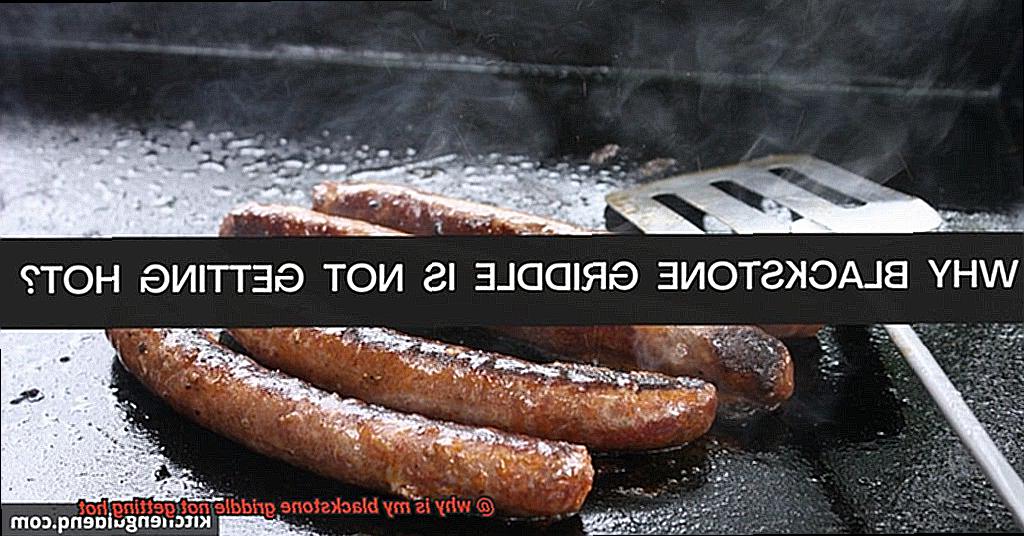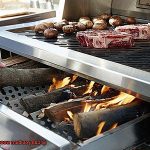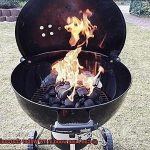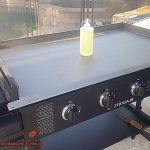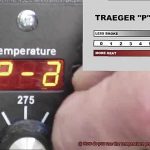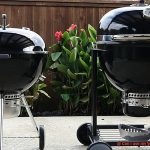Are you a passionate cook who relies on your trusty Blackstone griddle to whip up delicious meals? If so, you know how frustrating it can be when your griddle isn’t heating up as it should. Picture this: you’re gearing up for a backyard BBQ or planning to make a stack of mouth-watering pancakes, but your Blackstone griddle just won’t reach the right temperature.
There are several reasons why your Blackstone griddle might not be getting hot enough. Perhaps you’re not using it correctly or haven’t given it enough time to heat up properly. Maybe there’s an issue with the propane flow, or the burners and ignition system are blocked or malfunctioning. Whatever the reason, don’t panic – understanding what’s causing the problem is the first step in fixing it.
In this blog post, we’ll explore some of the most common reasons why your Blackstone griddle isn’t heating up and provide easy troubleshooting tips to help you get back on track. Whether you’re planning a big family dinner or just cooking up a quick weekday meal, grab yourself a cup of coffee and let’s dive into why your Blackstone griddle might not be reaching its full potential.
Contents
Reasons Why Your Blackstone Griddle Is Not Getting Hot
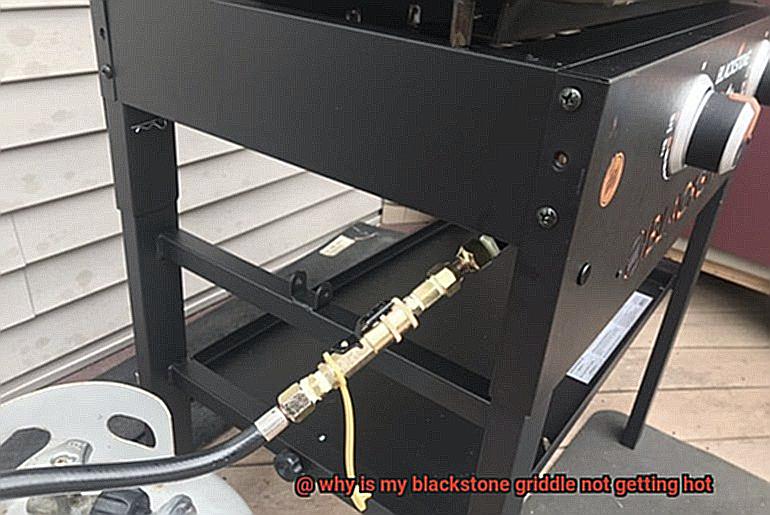
Many grill enthusiasts have faced this issue, but the good news is that there are several reasons why your Blackstone Griddle might not be getting hot, and most of them are easy to fix.
Low Gas Pressure
One of the most common reasons for a Blackstone griddle not getting hot is due to low gas pressure. This can be caused by a partially closed propane tank valve or a clogged regulator. The propane tank valve must be entirely open, and the regulator must be clean to ensure proper gas flow. If the regulator is clogged, use a brush or compressed air to clean it.
Dirty Burners
If your burners are dirty or clogged with debris, this can also prevent your Blackstone griddle from getting hot. To fix this issue, make sure to clean your burners regularly using a scraper or spatula. If the burners are heavily soiled, remove them and soak them in warm, soapy water before scrubbing them with a brush.
Faulty Igniter
A faulty igniter can also cause issues with your Blackstone griddle heating up correctly. If the igniter is not working, the gas may not be ignited, which prevents the griddle from heating up. To solve this issue, check your igniter regularly and replace it if necessary. You can also try lighting the grill manually using a lighter or match if the igniter is not working.
Damaged Burner Tubes
Damaged burner tubes can also cause issues with your Blackstone griddle heating up correctly. Check for any visible damage or wear and tear on the tubes and replace them if necessary. Make sure that the tubes are correctly installed and that there are no blockages that could affect gas flow.
Windy Conditions
Windy conditions can also affect the heat output of your Blackstone griddle. If it’s particularly windy outside, consider moving your griddle to a more sheltered area or using a wind guard to protect the burners. A wind guard can be made from aluminum foil or purchased online or at a home improvement store.
In conclusion, there are various reasons why your Blackstone griddle might not be getting hot. It’s essential to check all possible causes, including low gas pressure, dirty burners, faulty igniter, damaged burner tubes, and windy conditions.
a. Power Supply Issues
Faulty wiring, damaged power cords, or issues with the outlet itself can be the culprits behind this vexing problem. However, there are several potential causes and solutions to get your griddle sizzling again.
To start troubleshooting power supply issues, check the power cord for visible damage or frayed wires. If the cord looks good, try plugging the griddle into a different outlet to see if this resolves the issue. If not, inspect the wiring inside the griddle for loose connections or damaged components.
A tripped circuit breaker can also be responsible for power supply problems. Check your home’s circuit breaker box to ensure that the breaker for your kitchen or outdoor cooking area hasn’t been tripped. If it has, reset the breaker and try turning on your Blackstone griddle again.
If none of these solutions work, it may be time to call in an electrician. They can diagnose and repair any underlying electrical issues that may be preventing your griddle from heating up. In some instances, replacing the griddle altogether may be more cost-effective than investing in costly repairs.
It is essential to remember that power supply issues can be dangerous. Always take appropriate safety precautions when troubleshooting electrical appliances like Blackstone griddles. Following these troubleshooting procedures will help you identify and resolve power supply issues quickly and safely.
b. Thermostat Issues
Thermostat issues are a common culprit for this problem, and understanding the causes and solutions can save you time and money.
The thermostat is a vital component that regulates the temperature of your griddle. If it’s not functioning correctly, your griddle won’t heat up to the desired temperature. One of the primary reasons for thermostat issues is a faulty temperature control knob. A malfunctioning knob can cause the thermostat to malfunction, resulting in your griddle not heating up properly. Additionally, a damaged or broken thermostat sensor can also cause problems. The sensor detects and maintains the temperature of your griddle, so if it’s damaged, it won’t be able to regulate the temperature effectively.
Cleaning the thermostat with a damp cloth can sometimes resolve issues. Over time, grease and food particles can accumulate on the thermostat, causing it to malfunction. Regular cleaning can help remove any debris and ensure that it functions correctly.
If these simple fixes don’t work, you may need to replace the thermostat entirely. It’s important to purchase a genuine Blackstone griddle part to ensure compatibility and optimal performance. Replacing a faulty thermostat is not an easy task, so seeking professional assistance when replacing the thermostat is advisable.
c. Clogged Burner Tube Issues
Well, clogged burner tubes could be the culprit. But don’t fret, as an expert on griddle maintenance, I’m here to share some tips and tricks to help you solve this problem.
Over time, grease and debris can accumulate inside the burner tubes, obstructing the gas flow and reducing the heat output. So, it’s crucial to clean your griddle after each use to prevent any blockage. Using a specialized cleaner designed for griddles and wiping down the tubes will ensure that all the debris is removed from the burner tubes.
However, if you’re already experiencing issues with your burner tubes, it’s essential to check them for blockages. To do so, turn off the gas supply and detach the burners from the griddle. Take a closer look at each tube and look for visible signs of obstruction such as debris or a yellow or orange flame when you turn on the gas.
If you do notice blockages, there’s no need to panic. You can easily clear out the tubes by using a wire brush or compressed air. By taking these steps, you’ll be able to restore your Blackstone griddle’s performance and have it heating up like new.
But what if cleaning the burner tubes doesn’t solve the issue? In that case, it’s best to seek advice from a professional technician or contact the manufacturer for further assistance. Remember, prevention is always better than cure, so keep your Blackstone griddle in top shape with regular maintenance and cleaning.
d. Faulty Igniter Issues
It can be frustrating, especially when you have everything else ready to go. One of the most common reasons for this issue is a faulty igniter. As an expert in griddle maintenance, I’m here to help you troubleshoot these problems.
First and foremost, a worn-out battery is usually the culprit behind a faulty igniter. The battery powers the igniter, and without it, the propane gas won’t ignite. To avoid this issue, check the battery compartment regularly and replace the battery if necessary.
Another possible reason for a faulty igniter is dirt and debris buildup on the electrode or burner tube. Over time, these parts can accumulate dirt and debris, preventing them from functioning correctly. To prevent this from happening, it’s essential to clean these parts regularly.
If you’ve checked the battery and cleaned the electrode and burner tube but your Blackstone griddle is still not heating up, it may be time to replace the igniter entirely. You can purchase an igniter replacement kit from Blackstone or any reputable hardware store and install it yourself.
Troubleshooting the Issue
When it comes to griddle maintenance, troubleshooting the issue of a Blackstone griddle not getting hot is a crucial step in resolving the problem. As an expert on this topic, I know that there can be several reasons why your griddle fails to heat up properly. Therefore, it is vital to identify the root cause of the issue before attempting any repairs or modifications.
To start, checking the propane tank or gas line is a good place to begin. Often, a lack of heat can be due to insufficient propane or a gas line that has been turned off accidentally. It’s important to ensure that the propane tank has enough fuel and that the gas line is open and unobstructed. If this isn’t the issue, move on to the next possible cause.
A clogged burner is another common reason for Blackstone griddles not getting hot. Over time, debris can easily accumulate on the burners, which may prevent them from functioning correctly. To solve this issue, remove the burner and clean it thoroughly with a wire brush, making sure to remove any debris or grease buildup from the surface.
If cleaning the burner doesn’t solve the problem, then it might be worth checking the regulator. The regulator controls the pressure of gas flowing into the grill; if it’s faulty, it can cause low heat output. A faulty regulator may need replacing, so check with your manufacturer for guidance on how to do this.
Lastly, don’t forget to check all other components of your griddle are working correctly. Ensure that there are no obstructions in the air vents and that the ignition switch is functioning correctly. Conduct a thorough visual inspection of all gas lines to ensure there are no leaks.
Checking the Power Supply
Whether you’re cooking pancakes for breakfast or sizzling up some juicy burgers for dinner, a griddle that doesn’t work can derail your entire meal plan. That’s why it’s crucial to investigate every possible cause for the problem, starting with the power supply.
Checking the power supply is the first step towards diagnosing the issue of a Blackstone griddle not heating up. A faulty power source can prevent the griddle from receiving the necessary energy to heat up and cook food. Here are some steps to ensure that your power supply is working correctly:
First, check if your griddle is plugged into a working outlet. This simple step is often overlooked, but it’s critical to ensure that the outlet is providing sufficient power to the griddle. If you suspect that the outlet is the issue, try plugging in another appliance to see if it works.
If the outlet seems to be working fine, it’s time to check the circuit breaker or fuse box. A tripped circuit or blown fuse can sometimes be caused by the griddle drawing too much power. Resetting the circuit breaker or replacing the fuse can help fix this issue.
Another critical factor to consider is inspecting electrical connections on the griddle itself. Check that all wires are securely connected and not frayed or damaged. This step can help identify any internal wiring issues that may be preventing the griddle from heating up.
It’s also important to note that using extension cords or adapters can affect the power supply to the griddle. It’s recommended to plug the griddle directly into an outlet rather than using an extension cord.
Testing the Thermostat
We all know the frustration of having your Blackstone griddle not heating up properly, but before you call in the professionals, take a moment to test your thermostat. The thermostat controls the temperature of the griddle surface, and if it’s not functioning correctly, it can cause the griddle to not heat up properly. In this post, we’ll be discussing how to test the thermostat of your Blackstone griddle using a multimeter.
First things first, make sure your griddle is turned off and unplugged from any electrical source. Then, locate the thermostat on your control panel and unscrew it from the griddle. You’ll need a multimeter to test its continuity, which is a tool used to measure electrical voltage, current, and resistance.
Now, let’s get technical. Set your multimeter to measure resistance and touch one probe to each of the thermostat’s terminals. If the reading on your multimeter shows zero or a low number, then the thermostat is functioning correctly. Congratulations. However, if your multimeter shows an infinite resistance reading or no reading at all, then that means the thermostat is faulty and needs to be replaced.
It’s essential to note that some Blackstone griddles have more than one thermostat. Therefore, it’s crucial to test each one individually to identify which one is causing the issue.
If you need to replace your faulty thermostat, don’t worry; it’s an easy fix. You can purchase a replacement thermostat from Blackstone or through a third-party retailer. Just make sure you get the right one for your specific model.
Cleaning the Burner Tube
If so, the culprit could be a dirty or clogged burner tube. But have no fear, cleaning it is a breeze with just a few simple steps.
To start, ensure your safety by turning off the gas supply and disconnecting the propane tank or natural gas line. Then, remove the griddle top and locate the burner tube below. Next, use a wire brush or a gentle-bristled brush to clear away any debris or buildup inside the tube. Be sure to take care not to damage the burner holes in the process.
Once you’ve cleaned the burner tube thoroughly, take a moment to inspect it for any cracks or damage. If you notice any issues, it’s important to replace the tube before using your griddle again. However, if everything looks good, reassemble your griddle and give it a test run to see if it heats up properly.
Regularly cleaning your burner tube is critical not only for optimal function but also for safety reasons. Therefore, while you’re at it, don’t forget to clean the burners themselves and check for any other potential issues that may be hindering your griddle’s efficiency.
Here are some tips to help you maintain your Blackstone griddle:
- Clean your griddle after each use
- Use a grill cover when storing your griddle
- Clean the burners and burner tubes regularly
- Inspect all parts for wear and tear
Replacing the Igniter
It could be time to replace the igniter, a simple solution that can be accomplished in just a few easy steps.
Safety should always come first when working with propane gas. Start by turning off the propane tank and disconnecting it from the griddle before proceeding with any work. With safety concerns out of the way, you can move on to replacing the igniter.
Begin by removing the griddle top from the base. Unscrew any bolts or fasteners holding it in place to expose the igniter. The igniter is typically located near the front of the griddle surface and can be removed by unscrewing any bolts or fasteners.
Having removed the old igniter, it is now time to install a new one, following the manufacturer’s instructions carefully. Depending on your Blackstone griddle model, installation methods may vary. Most commonly, screwing in the new igniter into place and reconnecting the wire that runs to the control panel should suffice.
Once you have installed the new igniter, reassemble the griddle top onto the base and reconnect the propane tank. Turn on the propane and press the button or switch on the control panel to test the igniter. If you hear a clicking sound and see a spark at the burner, then your new igniter is working properly.
Tips for Maintaining Your Blackstone Griddle
Here are five sub-sections that will provide you with in-depth details on maintaining your Blackstone griddle:
Clean the Griddle after Each Use:
Cleaning the griddle after each use is crucial to ensure that it lasts long and works efficiently. A dirty griddle can cause hot spots and prevent it from heating evenly. To clean your griddle, use a scraper or spatula to remove any food residue and wipe it down with a damp cloth. Using a grill cleaner can help remove any tough stains.
Season the Griddle:
Seasoning your Blackstone griddle is an essential step to maintain its non-stick surface and prevent rusting. Before using the griddle for the first time, season it with oil. This process ensures that the oil seeps into the pores of the metal, creating a layer that helps to prevent rusting and maintain the non-stick surface of the griddle.
Check the Propane Tank:
If your Blackstone griddle is not getting hot enough, then there might be an issue with the propane tank. It may be empty or running low, which can cause the griddle to not heat up correctly. Check the propane tank and replace it if necessary.
Inspect the Regulator:
The regulator controls the flow of gas to the griddle, and if it’s not working correctly, it can cause the griddle to not get hot enough. Make sure to check that it’s properly connected and functioning correctly. If you notice any issues, replace it immediately for optimal performance.
Examine the Burners:
The burners are responsible for heating up the griddle, and if they are clogged or damaged, they may not work correctly, causing the griddle to not get hot enough. Inspect the burners and clean them if necessary. A clogged burner can be cleaned using a wire brush or a pin, but if it’s damaged, it should be replaced.
0yTx26tECOg” >
Conclusion
In conclusion, a Blackstone griddle not getting hot can be frustrating, but it’s important to remember that there are several potential causes.
By checking the propane tank, regulator, and burners for any issues, you can troubleshoot and fix the problem yourself. It’s also important to regularly clean your griddle to ensure optimal performance.
With these tips in mind, you’ll be back to cooking up delicious meals on your Blackstone griddle in no time.

